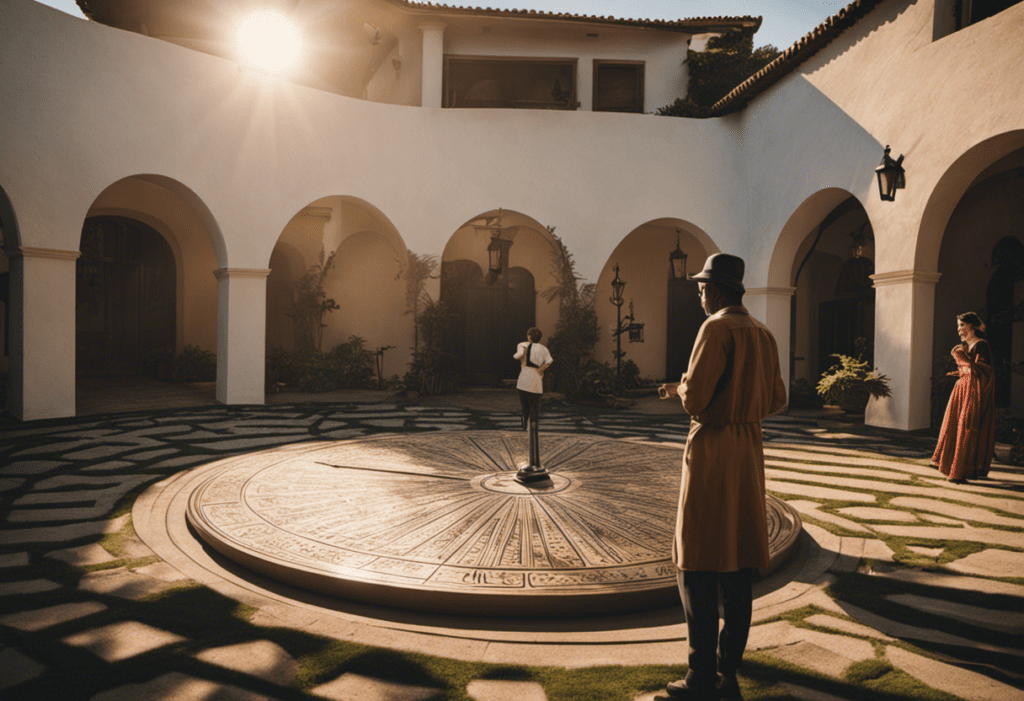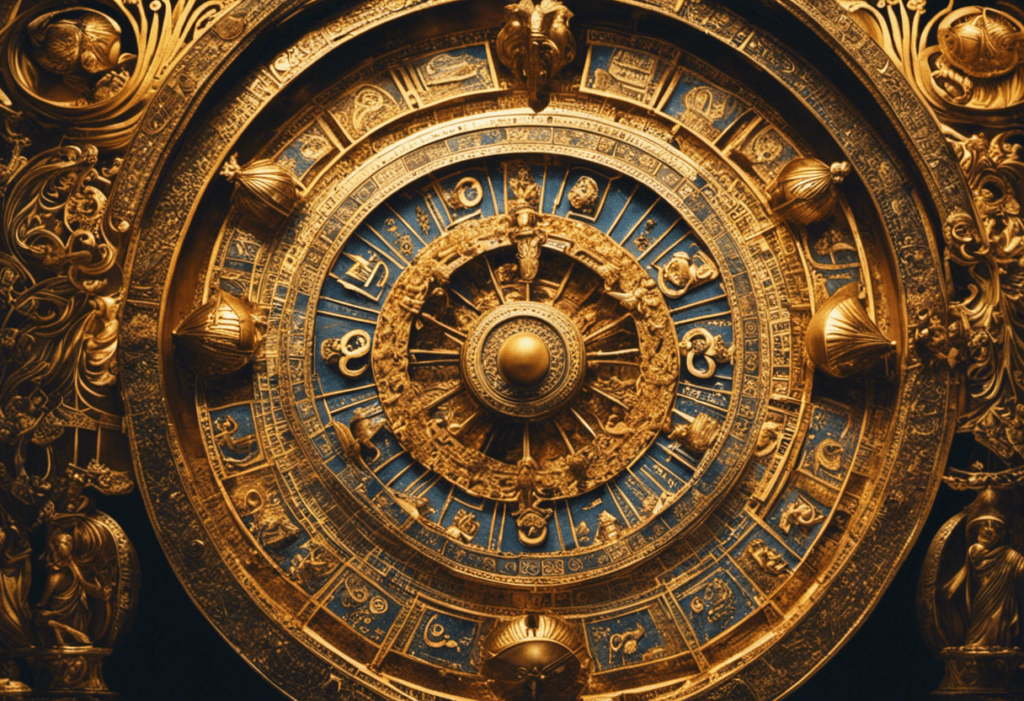Have you ever wondered how ancient civilizations maintained social cohesion?
In this article, we explore the fascinating world of Zoroastrian timekeeping and its role in fostering a sense of community.
By understanding the origins of Zoroastrian timekeeping, the alignment of daily rituals with celestial movements, and the involvement of Zoroastrian priests, we gain insights into how this ancient practice contributed to personal and collective identity.
Furthermore, we examine its modern applications and relevance in today’s society.
Join us as we delve into the depths of this intriguing subject.
Key Takeaways
- Zoroastrian timekeeping originated in ancient Persia and played a significant role in the religious and social life of the community.
- Celestial navigation and understanding celestial movements were crucial for accurately measuring the passage of time.
- Daily rituals aligned with celestial movements aim to harmonize actions with cosmic rhythms and foster communal bonding.
- Zoroastrian timekeeping fosters a sense of community bonding, affirms cultural heritage and values, and shapes individual and collective identities.
The Origins of Zoroastrian Timekeeping
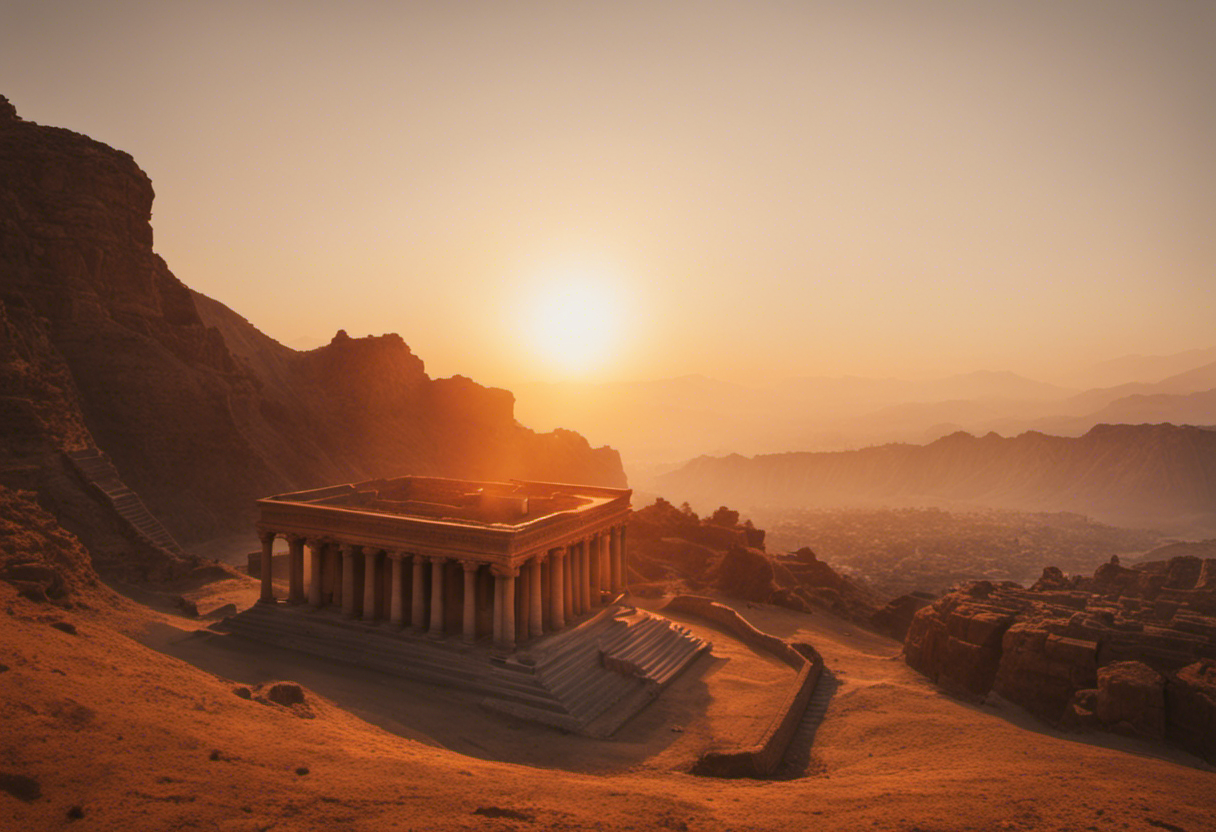

The origins of Zoroastrian timekeeping can be traced back to ancient Persia, where the practice played a significant role in the religious and social life of the community. Zoroastrianism, one of the world’s oldest religions, emphasized the importance of celestial movements in understanding the divine order of the universe. The ancient Persians believed that the movements of the stars, planets, and other celestial bodies were closely linked to the passage of time and had profound implications for human existence.
The origins of Zoroastrian timekeeping can be seen in the ancient texts of the Avesta, the sacred scriptures of Zoroastrianism. These texts contain references to the observation of celestial phenomena such as solar and lunar eclipses, solstices, and equinoxes. The ancient Persians developed a sophisticated system of measuring time based on these celestial events, which allowed them to organize their religious rituals, agricultural activities, and social events.
Furthermore, the practice of Zoroastrian timekeeping served as a means of social cohesion within the community. It provided a shared framework for understanding the passage of time and allowed individuals to align their actions with the rhythms of the natural world. By following a common calendar and participating in religious festivals and rituals, the ancient Persians reinforced their sense of community and collective identity.
Understanding the Celestial Movements


Our understanding of celestial movements is crucial to accurately measure the passage of time and organize various aspects of daily life. Celestial navigation has been used for centuries as a means of determining direction and timekeeping. This ancient practice relies on observing the positions and movements of celestial bodies such as the sun, moon, and stars to navigate and track time.
To fully grasp the significance of celestial navigation and its role in timekeeping techniques, let us consider the following imagery:
-
Imagine a sailor on a vast ocean, relying on the position of the stars to guide their ship safely to its destination. The ability to accurately determine the ship’s position and the time of day is essential for the success of their voyage.
-
Picture an ancient civilization relying on the movement of the sun and the changing seasons to determine the best times for planting and harvesting crops. Their knowledge of celestial movements allows them to optimize their agricultural practices and ensure a successful harvest.
Daily Rituals and Activities Aligned With the Cosmos


Daily rituals and activities aligned with the cosmos play a vital role in various cultures and belief systems. By acknowledging the celestial influences on our lives, these rituals aim to harmonize our actions with the cosmic rhythms.
Moreover, these practices serve as a means of communal bonding, bringing individuals together in shared devotion and reverence for the larger cosmic order.
Celestial Influences on Rituals
An understanding of celestial influences on rituals is vital for practitioners seeking to align their daily activities with the cosmic order. The celestial bodies, such as the sun, moon, and stars, have long been believed to exert a profound influence on human life and behavior. In many cultures, rituals and ceremonies are designed to harness these celestial forces and create a harmonious connection between individuals and the cosmos.
To illustrate the imagery associated with celestial influences on rituals, consider the following nested bullet point list:
- Celestial influences:
- The rising sun symbolizes new beginnings and the start of a new day, infusing rituals with a sense of hope and renewal.
- The waxing and waning of the moon reflect the cyclical nature of life, reminding practitioners of the constant ebb and flow of existence.
Harmonizing With Cosmic Rhythms
Three key principles guide the practice of harmonizing with cosmic rhythms: attuning to the natural cycles of the universe, aligning daily rituals with celestial movements, and recognizing the interconnectedness of all living beings.
Celestial meditation and cosmic time awareness are essential components of this practice. Celestial meditation involves focusing one’s mind on the celestial bodies and their energies, allowing for a deeper connection with the cosmic rhythms.
Cosmic time awareness refers to the understanding and acknowledgement of the cyclical nature of time, as influenced by celestial movements. By incorporating these principles into daily life, individuals can cultivate a sense of harmony and balance with the universe.
This practice encourages a greater awareness of our place in the cosmic order and fosters a deep sense of interconnectedness with all living beings. Through harmonizing with cosmic rhythms, individuals can experience a profound sense of peace and fulfillment.
Rituals for Communal Bonding
One of the key components for fostering communal bonding is through the practice of engaging in rituals that are aligned with the cosmos. These rituals serve as a way to bring people together and create a sense of unity and belonging.
Celebratory gatherings and religious festivals are examples of such rituals that have been practiced throughout history by various cultures and religions.
In celebratory gatherings, people come together to mark important milestones or events, such as weddings, birthdays, or anniversaries. These gatherings often involve rituals that symbolize unity, love, and happiness. The shared experience of participating in these rituals strengthens the bonds between individuals and reinforces the sense of community.
Religious festivals, on the other hand, are deeply rooted in spiritual beliefs and traditions. They often involve elaborate rituals and ceremonies that are performed collectively. These festivals provide an opportunity for individuals to connect with their faith, express devotion, and experience a sense of belonging to a larger religious community.
The Role of Zoroastrian Priests in Timekeeping
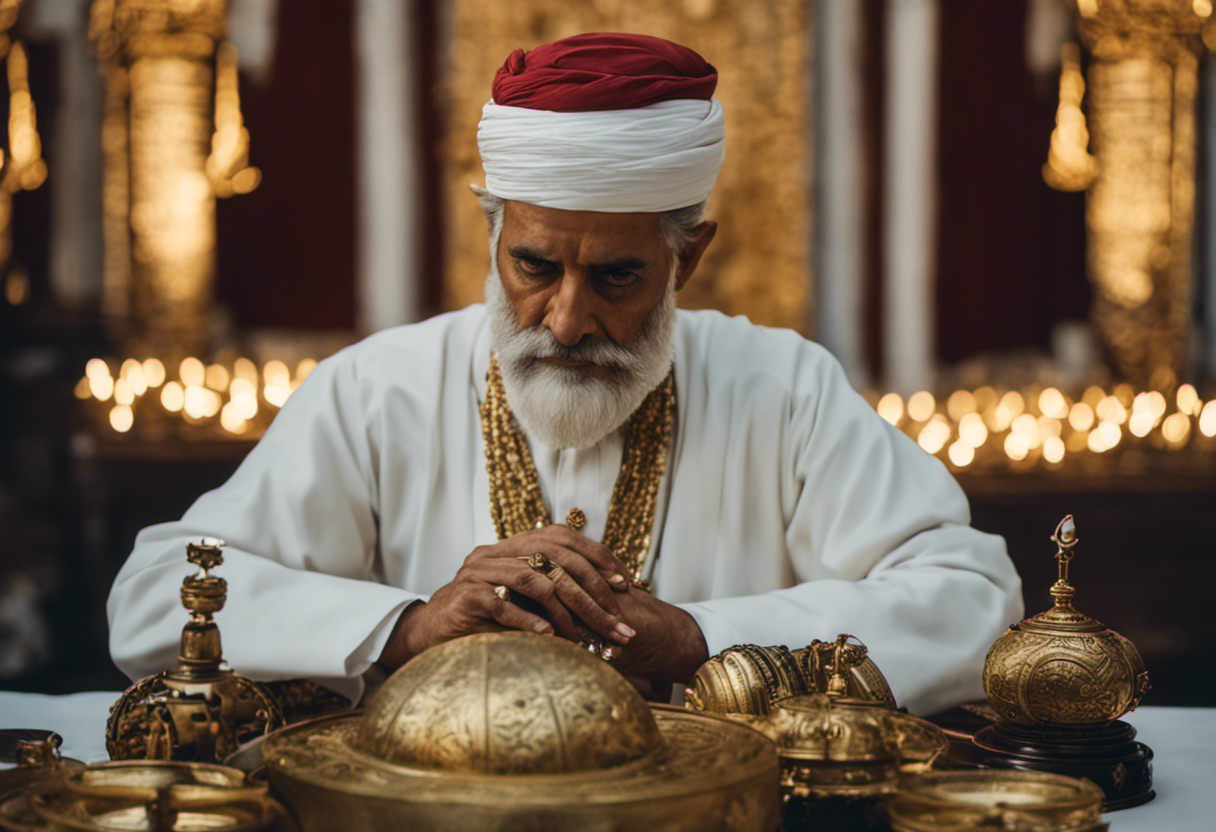

The Zoroastrian priests actively engage in overseeing and regulating the process of timekeeping within their community, ensuring the accuracy and consistency of their sacred rituals and religious practices. This role of the priests in timekeeping holds significant theological significance and has a long historical development within the Zoroastrian tradition.
Timekeeping plays a crucial role in the Zoroastrian religious calendar, which is based on the solar year. The priests meticulously track the movements of celestial bodies and determine the accurate dates and times for various religious observances and ceremonies. This ensures that the rituals are performed at the right time, according to the divine order. The precise timing of these rituals is believed to enhance their spiritual efficacy and uphold the cosmic balance between good and evil.
The historical development of Zoroastrian timekeeping can be traced back to ancient Persia. The Zoroastrian priests, known as Magi, were revered for their knowledge and understanding of celestial phenomena. They studied the movements of the sun, moon, and stars, and developed sophisticated methods of time measurement and calculation. Over the centuries, this tradition of timekeeping has been passed down through generations of Zoroastrian priests, ensuring the continuity and authenticity of their religious practices.
Zoroastrian Timekeeping and Community Bonding
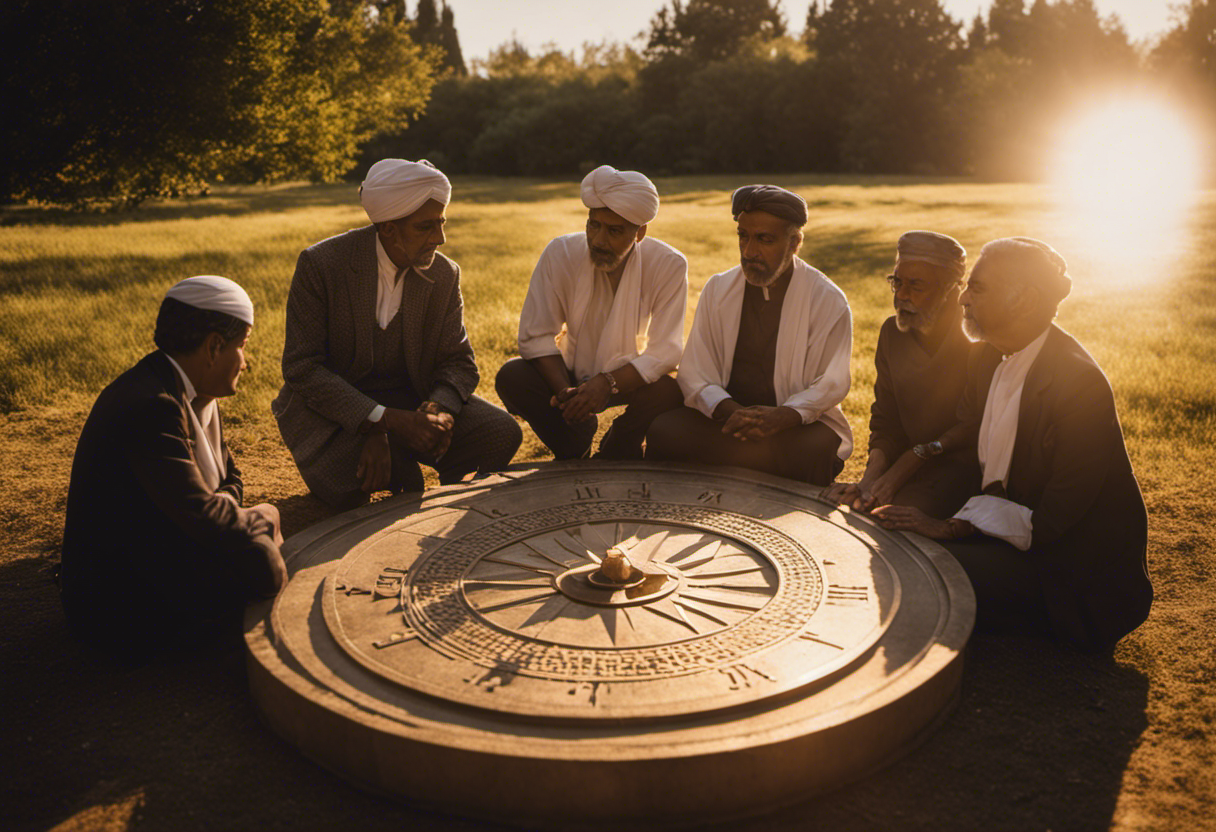

Interestingly, Zoroastrian timekeeping not only serves as a means of tracking celestial movements but also fosters a sense of community bonding among its practitioners. In Zoroastrianism, time is considered sacred and plays a significant role in cultural traditions and spiritual practices. The intricate system of timekeeping in Zoroastrianism reflects the deep spiritual significance attached to the passage of time.
Zoroastrian timekeeping is based on the movements of celestial bodies, particularly the sun and stars. This ancient tradition involves a complex calendar system that divides the year into different festivals and rituals. These festivals, such as the celebration of Noruz, the New Year, bring the community together, promoting unity and solidarity.
The communal aspect of Zoroastrian timekeeping is further enhanced by the practice of gathering for prayers and rituals at specific times of the day. These regular gatherings not only strengthen the spiritual connection among the community members but also provide an opportunity for social interaction and support.
Furthermore, Zoroastrian timekeeping fosters a sense of belonging and identity within the community. By adhering to the shared calendar and participating in the prescribed rituals, individuals affirm their commitment to their cultural heritage and the values of Zoroastrianism.
Impact on Personal and Collective Identity


Zoroastrian timekeeping actively shapes and influences both individual and collective identities, emphasizing the importance of cultural heritage and shared values within the community. Cultural preservation through timekeeping is a key aspect of Zoroastrianism, as it serves as a tool for maintaining and transmitting cultural traditions across generations. By adhering to specific timekeeping practices, Zoroastrians are able to preserve their cultural identity and reinforce their sense of belonging to a larger collective.
The psychological impact of timekeeping practices within the Zoroastrian community is significant. Time has a profound effect on human psychology, shaping our perception of events and providing a framework for organizing our lives. In the case of Zoroastrians, their timekeeping practices serve as a constant reminder of their cultural heritage and values. This can foster a sense of pride and identity among individuals, as they are constantly aware of their connection to a rich and ancient tradition.
Furthermore, the collective adherence to timekeeping practices within the Zoroastrian community creates a sense of unity and cohesion. By participating in shared rituals and observances, individuals feel a sense of belonging and solidarity with others who follow the same traditions. This collective identity strengthens social bonds and fosters a sense of community among Zoroastrians.
Modern Applications and Relevance of Zoroastrian Timekeeping


One can appreciate the modern applications and relevance of Zoroastrian timekeeping by examining its impact on cultural preservation and community cohesion.
Zoroastrian timekeeping, with its rich history and traditions, has found new significance in the modern world. It serves as a tool for cultural preservation, allowing Zoroastrians to maintain their unique identity and heritage in a rapidly changing society. Additionally, it fosters community cohesion by providing a shared framework for organizing social events and religious ceremonies.
The modern applications of Zoroastrian timekeeping can be understood through two key sub-lists:
-
Cultural Preservation:
- Zoroastrian timekeeping helps to preserve ancient customs and practices, ensuring that they are passed down through generations. The adherence to specific rituals and observances associated with different times of the day and year helps maintain the cultural fabric of the community.
- By following Zoroastrian timekeeping, individuals are able to stay connected to their ancestral roots and maintain a sense of pride in their heritage. This contributes to the continued existence and flourishing of Zoroastrian culture.
-
Community Cohesion:
- Zoroastrian timekeeping provides a shared language and framework for organizing social events and religious ceremonies. This creates a sense of belonging and unity within the community.
- The adherence to specific timings for prayers and rituals fosters a sense of togetherness and shared purpose. It allows individuals to come together and engage in collective acts of worship, strengthening the bonds between community members.
Conclusion
In conclusion, Zoroastrian timekeeping has played a significant role in fostering social cohesion within the community.
By aligning daily rituals and activities with celestial movements, Zoroastrians have developed a profound connection with the cosmos, strengthening their collective identity and sense of belonging.
The involvement of Zoroastrian priests in timekeeping further reinforces the community’s unity and provides guidance for adherents.
While rooted in ancient traditions, Zoroastrian timekeeping continues to hold relevance in modern society, offering valuable insights into the importance of harmony between humans and the natural world.

